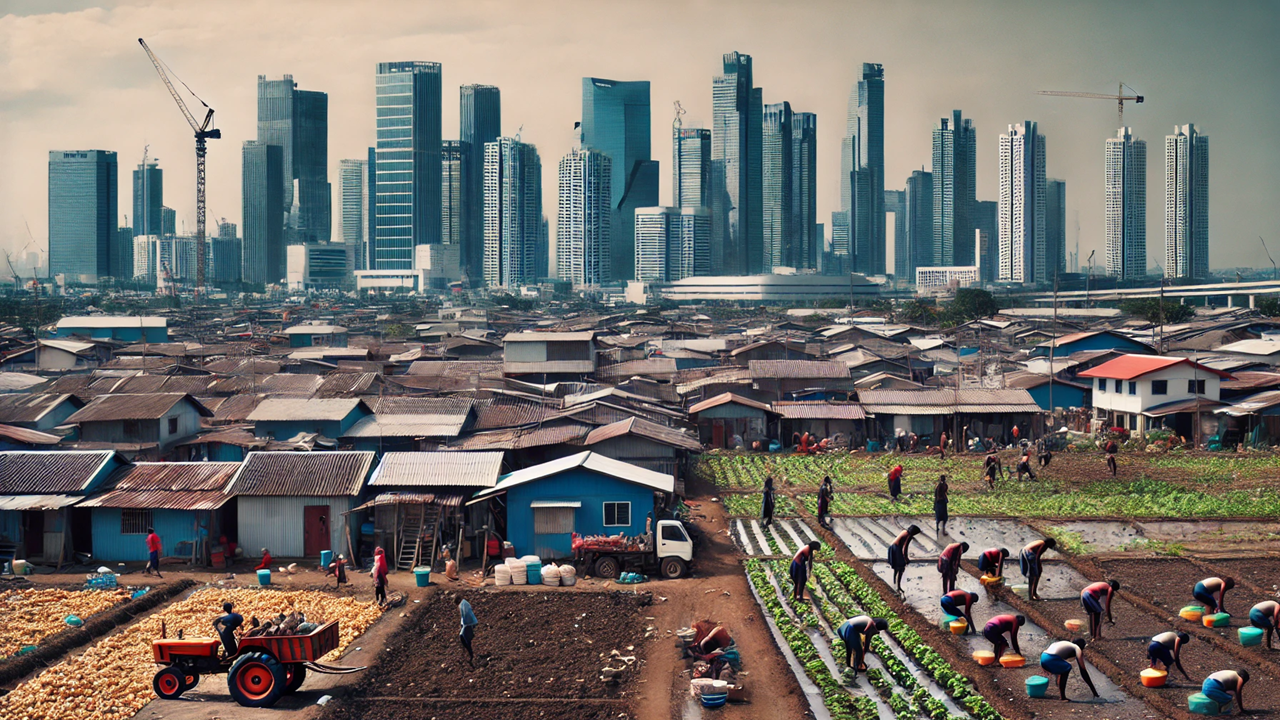Tackling Poverty Amidst Global Megatrends: A Complex Challenge
The UNCTAD report, "Global Megatrends and the Quest for Poverty Eradication," explores the impact of global megatrends such as income inequality, climate change, demographic shifts, technological progress, and urbanization on poverty. It highlights the need for coordinated policies to promote inclusive growth, reduce inequality, and harness the benefits of technological progress and urbanization.

In a rapidly changing world, the quest to eradicate poverty is becoming increasingly complicated by several global megatrends. These trends, including income inequality, climate change, demographic shifts, technological progress, and urbanization, are reshaping societies and posing significant challenges to sustainable development. A recent report titled, "Global Megatrends and the Quest for Poverty Eradication," by the United Nations Conference on Trade and Development (UNCTAD) delves into how these forces impact poverty and what can be done to address them.
The Rising Tide of Inequality
Income inequality remains one of the most significant drivers of poverty. The report highlights that inequality has both direct and indirect effects on poverty levels. Directly, an uneven distribution of income leaves a larger portion of the population below the poverty line. Indirectly, inequality stifles economic growth by creating barriers to education and investment opportunities for the poor, leading to the underutilization of a country’s potential.
Climate Change: A Looming Threat
Climate change exacerbates poverty by reducing agricultural productivity, increasing the frequency of natural disasters, and worsening health outcomes. Vulnerable populations, particularly in developing countries, are hit hardest as they rely heavily on agriculture for their livelihoods. Rising temperatures, frequent droughts, and devastating floods lead to crop failures and food insecurity, pushing more people into poverty.
Demographic Shifts and Their Implications
Demographic changes also play a crucial role in the poverty landscape. In developed countries, aging populations increase the dependency ratio, placing a heavier burden on the working-age population. Conversely, developing countries with growing working-age populations have the potential to leverage this demographic dividend to reduce poverty. However, this requires substantial investment in education and job creation to ensure that the growing workforce is adequately employed.
Technological Progress: Double-Edged Sword
Technological advancements are a key driver of economic growth and job creation. However, they also pose challenges by creating winners and losers in the economy. Labor-augmenting technologies can reduce poverty by increasing productivity and wages. In contrast, labor-saving technologies can lead to job losses, particularly for low-skilled workers, thereby increasing poverty. The speed of technological change is critical; rapid advancements can disrupt labor markets, making it difficult for displaced workers to adapt and find new employment opportunities.
Urbanization: Opportunities and Challenges
Urbanization has the potential to reduce poverty by providing better job opportunities and improving living standards. Migration from rural to urban areas can boost wages in both sectors by increasing agricultural productivity and creating more jobs in urban areas. However, in many developing countries, rapid urbanization without corresponding industrial development and job creation has led to the growth of informal settlements and increased urban poverty.
Policy Implications: A Coordinated Approach
Addressing the multifaceted challenge of poverty eradication requires a comprehensive and coordinated approach. Governments must implement policies that promote inclusive growth and reduce income inequality. This includes progressive tax systems, social safety nets, and improved access to financial services. Investments in education and infrastructure are also crucial to boost economic growth and per capita incomes.
Technological progress should be managed to ensure it benefits all segments of society. Governments can support this by promoting skills development and training programs that help workers transition to new industries. Encouraging the adoption of labor-augmenting technologies and enhancing access to technology for vulnerable groups can also mitigate the negative impacts of rapid technological change.
Urbanization should be coupled with productive economic transformation to create decent jobs and foster sustainable development. This requires strengthening efforts to develop human and physical capital, promoting product and export diversification, and maintaining political and macroeconomic stability.
The UNCTAD report underscores the importance of recognizing and managing the complex interactions between global megatrends and poverty. A holistic approach that integrates these trends into national development strategies, budgets, and plans is essential for achieving sustainable poverty eradication. By addressing these challenges with coordinated policies, governments can create a more equitable and prosperous future for all.
- FIRST PUBLISHED IN:
- Devdiscourse
ALSO READ
Indian Cities Turn into 'Heat Traps' Amid Climate Change
Firozabad's Glass Workers Bear Brunt of Blistering Heatwaves Amid Climate Change Crisis
Scorching Heatwaves Ravage Continents: Climate Change Fuels Record-Breaking Temperatures
Scorching Heatwaves Signal Climate Change Crisis
Human-Caused Climate Change Supercharges Killer Heatwave in Americas










